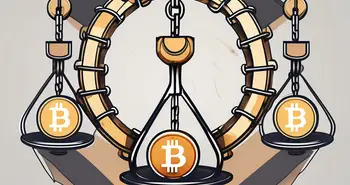Tulip Mania: The World’s First Economic Bubble and Its Lessons for Today

Tulip Mania, the notorious financial bubble that swept through the Dutch Republic in the 17th century, remains one of the most fascinating episodes in economic history. As an expert on this topic, I am here to guide you through the rise and fall of Tulip Mania and shed light on its enduring legacy.
Understanding Tulip Mania
Tulip Mania can only truly be comprehended when we consider the economic and cultural climate of the 17th century. The Dutch Republic was experiencing a period of extraordinary prosperity, a Golden Age of trade and innovation. It was in this context that tulips, originally imported from the Ottoman Empire, started gaining popularity.
The allure of tulips was not just economic, but deeply rooted in cultural symbolism. Tulips represented beauty, prestige, and an unspoken status in society. It was a time where the ability to own rare and exotic tulip bulbs became a statement of wealth and taste.
As the demand for tulips grew, so did their prices. Tulip bulbs were traded at exorbitant rates, with some bulbs fetching prices equivalent to luxurious homes or even a year's salary for a skilled craftsman. This speculative frenzy led to a market bubble, where the value of tulips soared to unsustainable levels.
Furthermore, the tulip market was characterized by a unique trading system known as “windhandel” or “wind trade,” where tulip bulbs were bought and sold without the bulbs physically changing hands. This practice added an additional layer of complexity to the already volatile market, contributing to the eventual crash of the tulip bubble.
The Birth of Tulip Mania
The introduction of tulips to Europe, specifically the Netherlands, sparked a wave of excitement and demand. The Dutch, known for their expertise in horticulture, began cultivating new varieties of tulips, resulting in an explosion of colors and shapes. The love affair with tulips truly began as people realized the potential value these unique flowers held.
Soon, tulip bulbs became highly sought after commodities, and an organized tulip trade emerged. Tulip auctions were conducted regularly, and people from all walks of life eagerly participated in the frenzied buying and selling. This marked the birth of Tulip Mania.
As the craze for tulips grew, prices soared to exorbitant levels, with some bulbs fetching prices equivalent to a year's salary for a skilled worker. The allure of owning rare and exquisite tulip varieties became a symbol of wealth and status, driving people to invest heavily in this burgeoning market.
The frenzy reached its peak in the early 17th century, with speculators engaging in frenetic trading and creating a speculative bubble that would eventually burst, leading to a dramatic collapse in tulip bulb prices. The aftermath of Tulip Mania served as a cautionary tale about the dangers of speculative excess and the unpredictable nature of financial markets.
The Peak of Tulip Mania
At its zenith, Tulip Mania took on a life of its own, propelled by speculation and the promise of untold riches. People were willing to pay exorbitant sums for tulip bulbs, sometimes even selling valuable properties and possessions to acquire them. The tulip market became a frenzy of buying and selling, with prices soaring to unimaginable levels.
Among the most expensive tulips was the Semper Augustus, sought after for its unique bicolor petals. It is said that at the peak of Tulip Mania, a single bulb of the Semper Augustus could fetch the price of a grand house. The tulip market appeared invincible; however, the end was approaching swiftly.
As the craze reached its climax, tulip bulbs were not just a commodity but a status symbol. People flaunted their prized bulbs as a sign of wealth and social standing, leading to even more fervent trading. The allure of quick profits and the thrill of speculation blinded many to the impending crash that loomed on the horizon.
Despite warnings from some prudent investors about the unsustainable nature of the tulip market, the majority remained caught up in the frenzy, believing that the prices would continue to rise indefinitely. The streets buzzed with excitement as fortunes were made and lost in a single transaction, creating an atmosphere of both euphoria and anxiety.
The Collapse of Tulip Mania
In 1637, the tulip bubble finally burst. Just as quickly as the tulip market soared, it plummeted into oblivion. Panic ensued as people realized they had invested their fortunes in what was essentially a speculative bubble. The tulip trade collapsed, leaving many impoverished and consequences that would reverberate throughout the Dutch economy.
The aftermath of Tulip Mania was characterized by widespread financial ruin and distrust. The Dutch government attempted to intervene, but it was too late. The repercussions of Tulip Mania lingered, leading to a cautious approach towards speculative ventures and the establishment of financial regulations to prevent future bubbles.
Despite the devastation caused by the collapse of Tulip Mania, the event also had some positive outcomes. The Dutch economy, although shaken, eventually recovered from the crisis. Lessons were learned about the dangers of speculative frenzies and the importance of prudent financial practices. This period of economic turmoil led to a period of reflection and reform in the Dutch financial sector, ultimately strengthening it in the long run.
Moreover, the collapse of Tulip Mania had a lasting impact on the psyche of the Dutch people. It served as a cautionary tale, reminding them of the fragility of markets and the dangers of unchecked speculation. This collective memory influenced the Dutch approach to finance for generations to come, instilling a sense of prudence and moderation in their financial dealings. The collapse of Tulip Mania may have been a dark chapter in Dutch history, but it also paved the way for a more stable and resilient financial system in the future.
Lessons from Tulip Mania
The story of Tulip Mania serves as a cautionary tale for modern times, reminding us of the dangers of speculative markets. It begs us to question the role of greed and blind optimism in driving economic bubbles. History has shown that financial markets are susceptible to speculation, and we must remain vigilant to prevent similar collapses.
As an expert on Tulip Mania, I can say that the fascination with this period of economic turmoil endures. The lessons learned from Tulip Mania continue to shape our understanding of market behavior and serve as a reminder of the importance of responsible investing.
A Personal Story of Tulip Mania
I remember vividly the first time I came across the story of Tulip Mania during my early days as a student of economics. It fascinated me how such a seemingly trivial item as a flower bulb could captivate an entire nation and lead to financial devastation. This sparked my interest in studying financial history, seeking to understand the dynamics of speculative markets and the human behavior behind them. It is this inquisitiveness that has driven me to become an expert on Tulip Mania and share my knowledge with others.
One fascinating aspect of Tulip Mania is the social implications it had on Dutch society during the 17th century. The obsession with tulips not only affected the economy but also permeated various aspects of daily life. Tulips became a status symbol, with prices skyrocketing to exorbitant levels, leading to a stark divide between the wealthy tulip owners and the common people.
Furthermore, the aftermath of Tulip Mania saw the implementation of new financial regulations and the establishment of trading practices to prevent such a catastrophic event from recurring. The Dutch government took proactive measures to stabilize the economy and restore public trust in the financial system, setting a precedent for future market regulations.
FAQ
What caused Tulip Mania to occur?
Tulip Mania was fueled by a combination of economic prosperity, cultural symbolism, and speculation. The Dutch Republic was experiencing a period of great wealth, and tulips became a symbol of status and beauty. The allure of tulips was not only due to their aesthetic appeal but also because they were considered exotic and rare, adding to their mystique. As the demand for tulips grew, so did their prices, leading to a frenzied market where bulbs were traded at exorbitant values. This phenomenon was further exacerbated by the introduction of futures trading, allowing speculators to bet on the future prices of tulip bulbs, thus inflating the bubble even more.
What were the most expensive tulips during Tulip Mania?
The most sought-after tulip during Tulip Mania was the Semper Augustus, known for its strikingly beautiful patterned petals. This particular tulip variety was characterized by its vivid red and white streaks, resembling flames, making it a true marvel of nature. The Semper Augustus was not only prized for its aesthetic appeal but also for its rarity, as it was notoriously difficult to propagate, adding to its exclusivity. The prices commanded by the Semper Augustus reached unprecedented levels, with single bulbs reportedly selling for the equivalent of a luxurious estate, highlighting the irrational exuberance that defined the Tulip Mania period.
What lessons can be learned from Tulip Mania?
Tulip Mania serves as a reminder of the dangers of speculative markets and the role of human psychology in driving financial bubbles. It teaches us to approach investments with caution and not to be swayed by irrational exuberance. The tulip craze underscores the importance of conducting thorough research, diversifying one's portfolio, and being wary of investment trends driven by hype rather than fundamentals. Furthermore, Tulip Mania highlights the significance of regulatory oversight in financial markets to prevent excessive speculation and market manipulation.
Why is Tulip Mania still relevant today?
Although Tulip Mania took place centuries ago, its relevance lingers in our understanding of financial markets and the human behavior that drives them. It serves as a constant reminder of the potential consequences of unchecked speculation and the importance of prudent financial decision-making. The parallels between Tulip Mania and modern-day market phenomena, such as cryptocurrency booms and meme stock frenzies, emphasize the enduring relevance of studying historical market bubbles. By reflecting on the lessons of Tulip Mania, investors can better navigate volatile market conditions and make informed choices based on sound financial principles.
As we reflect on the lessons of Tulip Mania and the importance of making informed, prudent investment decisions, consider the innovative opportunities presented by Morpher. Embrace the future of trading with a platform that eliminates traditional barriers, offering zero fees, infinite liquidity, and the ability to trade a vast array of assets, including the unconventional. With Morpher, you gain access to fractional investing, short selling without interest fees, and up to 10x leverage to amplify your trades, all while maintaining safety and control over your funds. Don't miss out on the chance to transform your trading experience. Sign Up and Get Your Free Sign Up Bonus today, and join the revolution with Morpher.

Disclaimer: All investments involve risk, and the past performance of a security, industry, sector, market, financial product, trading strategy, or individual’s trading does not guarantee future results or returns. Investors are fully responsible for any investment decisions they make. Such decisions should be based solely on an evaluation of their financial circumstances, investment objectives, risk tolerance, and liquidity needs. This post does not constitute investment advice.

Painless trading for everyone
Hundreds of markets all in one place - Apple, Bitcoin, Gold, Watches, NFTs, Sneakers and so much more.

Painless trading for everyone
Hundreds of markets all in one place - Apple, Bitcoin, Gold, Watches, NFTs, Sneakers and so much more.









